13 Wild Animals in Victoria [Wildlife in Victoria]
Want to know more about the wildlife in Victoria, Australia?
Discover 13 wild animals in Victoria in this post, as well as interesting facts about them. 🇦🇺
Native Animals of Victoria
Victoria is the second-smallest state in Australia, but also the most densely populated one. It is located in the southeastern part of the country, has a population of more than 6.5 million, is home to multiple Aboriginal groups such as the Taungurung or the Boonwurrung, and is home to 4 of Australia’s 20 largest cities. It is bordered by New South Wales and South Australia, and its capital and largest city is Melbourne, which counts more than 4,917,000 inhabitants, and is Australia’s second-most populated city.
An interesting part of this region that I wanted to tackle is its wildlife. In light of that, I have listed the best of it, and I hope you will love learning what animals live in Victoria.
Here’s the Victoria animals list.
1. Common wombat
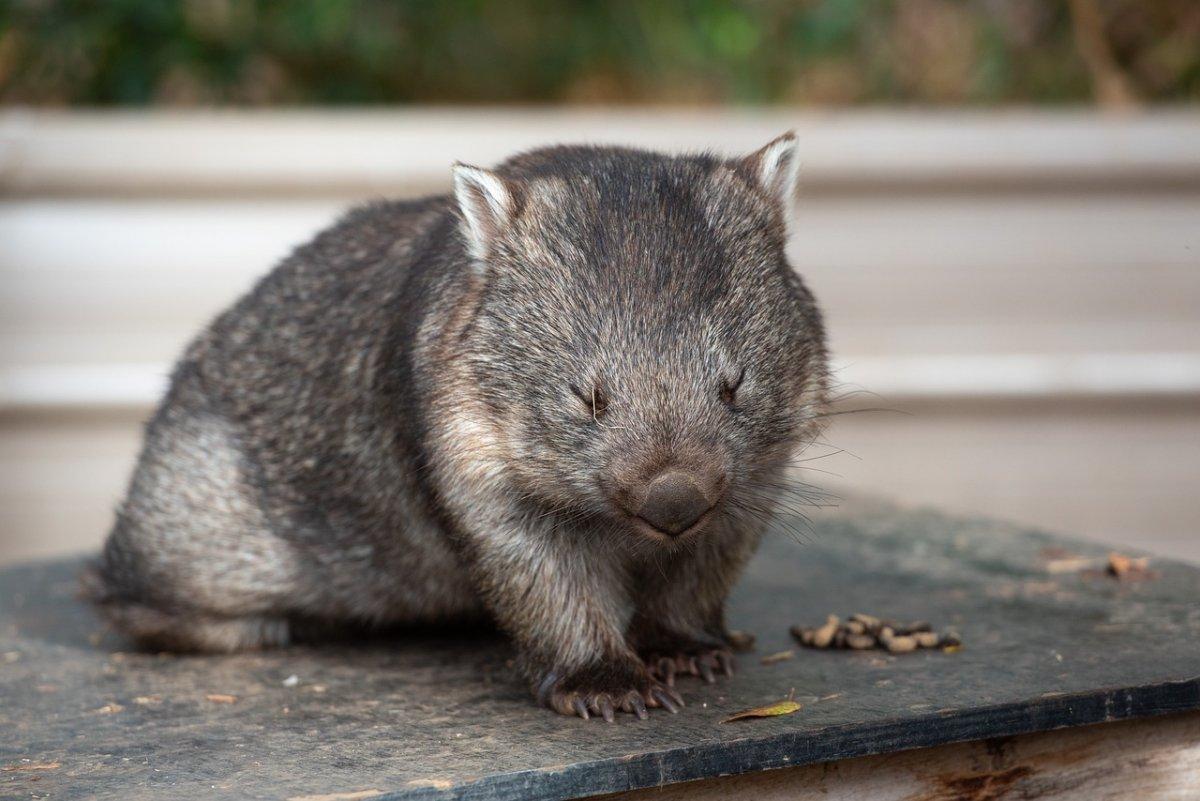
- Name: Common wombat
- Scientific name: Vombatus ursinus
- Conservation status:
The common wombat, also known as the bare-nosed wombat or the coarse-haired wombat, is a species of marsupial endemic to southeastern mainland Australia and Tasmania. It is one of the most emblematic and unique animals in all of Australia and can be pretty large.
Although listed as least concern, the common wombat is declining in the western parts of Victoria. It is a solitary and territorial species that feeds on grass and other plant materials.
Best spot to see this animal: Wilsons Promontory National Park
2. Malleefowl
- Name: Malleefowl
- Scientific name: Leipoa ocellata
- Conservation status:
The malleefowl is a species of ground-dwelling bird native to much of Australia. It is about the same size as a domestic chicken, to which it is not closely related, and it is famous for its large nesting mounds built by males, as well as its lack of parental care for chicks.
This bird is shy, solitary, and wary, and it is thus very difficult to see in the wild. It occupies a territory and only socializes during the mating season.
Best spot to see this animal: Little Desert National Park
3. Gray-headed flying fox
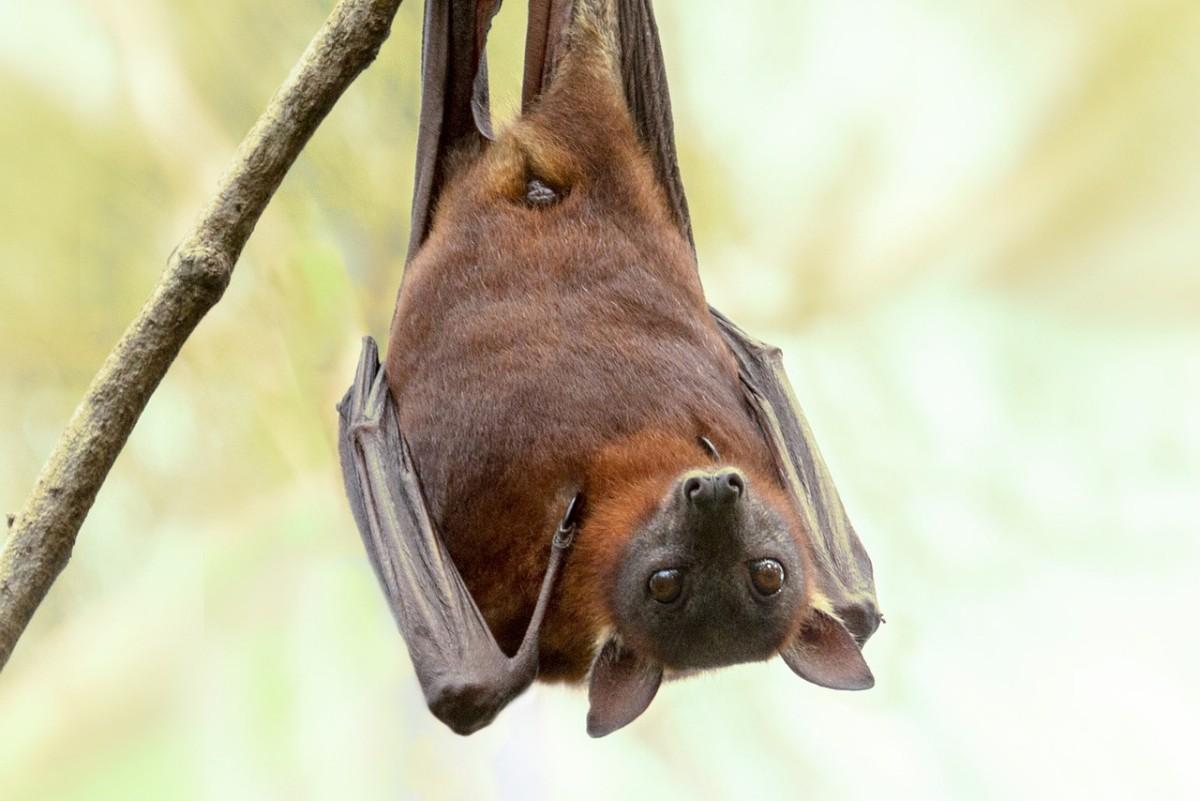
- Name: Gray-headed flying fox
- Scientific name: Pteropus poliocephalus
- Conservation status:
The gray-headed flying fox is a species of megabat endemic to Australia, where it can only be found around the southeastern coastlines. It has been considered vulnerable to extinction since 2021, mainly due to habitat loss, competition with other flying foxes, and extreme temperatures.
This bat is known to inhabit a wide variety of areas, from rainforests to swamps and woodlands. During the day, it stays in roosts of hundreds to tens of thousands of individuals, before emerging at dusk and feeding on nectar, fruit, and pollen.
Best spot to see this animal: Geelong
4. Koala

- Name: Koala
- Scientific name: Phascolarctos cinereus
- Conservation status:
The koala, also inaccurately known as the koala bear, is a species of marsupial endemic to Australia. Alongside the kangaroo, it is the most iconic marsupial in the world, and a very strong symbol of Australia, but also of the natural disasters striking the world, particularly suffering from wildfires.
The Victorian subpopulation of the koala is the largest and has brown fur and a wider skull.
Best spot to see this animal: Phillip Island
5. Red kangaroo
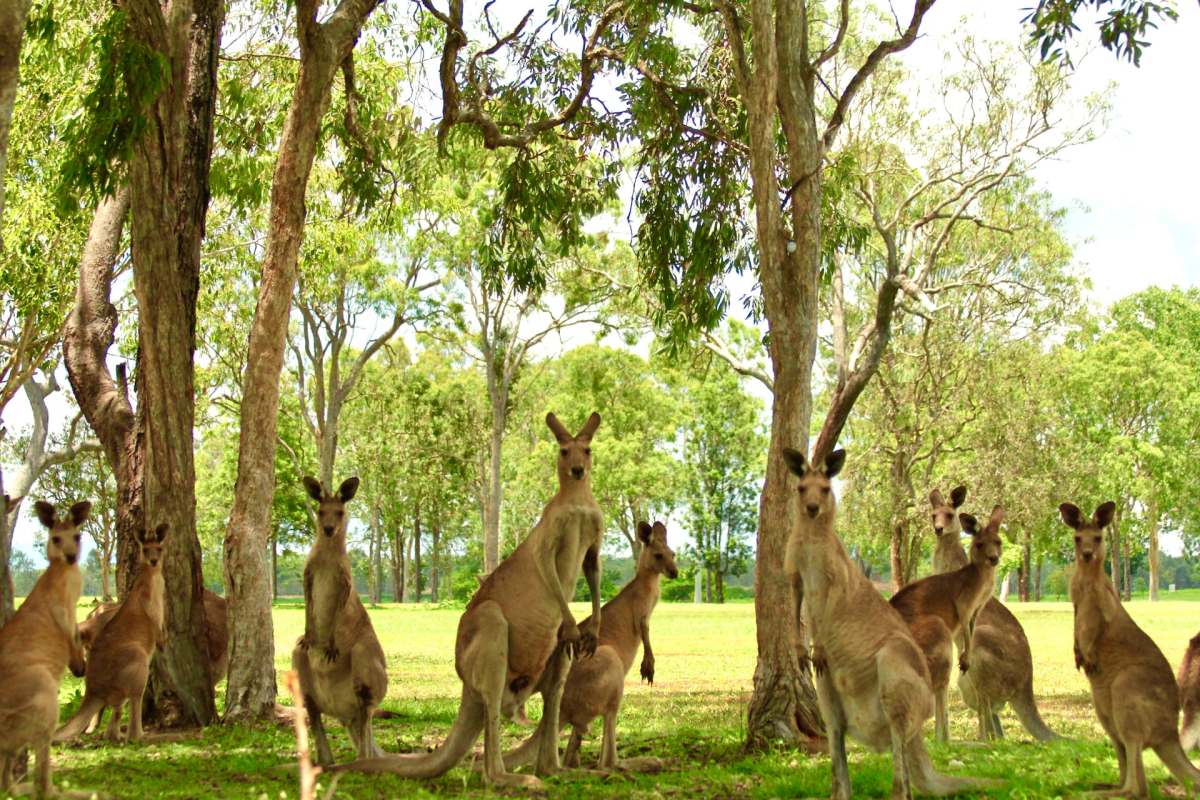
- Name: Red kangaroo
- Scientific name: Osphranter rufus
- Conservation status:
Speaking of the kangaroo, there is Australia’s worldwide famous emblem and national animal!
The red kangaroo is not only the largest kangaroo but also the largest marsupial and the largest terrestrial mammal native to Australia. It can be found all across mainland Australia, except for the most fertile, coastal areas. It is particularly abundant in the country, and its legs work like a rubber band, stretching when the animal comes down and releasing its energy afterward.
Best spot to see this animal: Healesville Sanctuary
6. Platypus
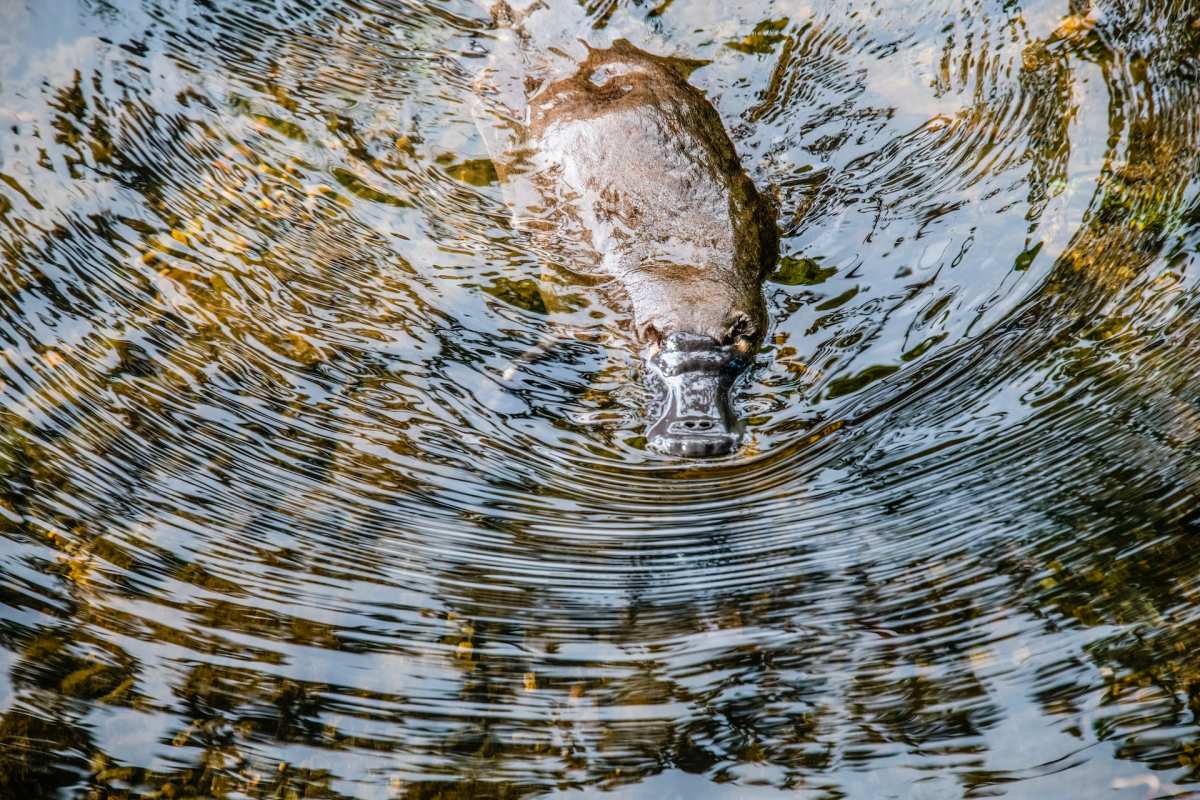
- Name: Platypus
- Scientific name: Ornithorhynchus anatinus
- Conservation status:
The platypus is a particularly intriguing animal endemic to Australia. It resembles both a beaver and a duck, and is one of the only mammals to lay eggs, alongside echidnas! It is one of Australia’s most unique animals and can be found in the eastern and southeastern parts of the country, including Tasmania.
Although considered near threatened with extinction on a global scale, the platypus is classified as one of the endangered animals in Victoria, mostly due to habitat destruction.
Best spot to see this animal: Healesville Sanctuary
7. Burrunan dolphin
- Name: Burrunan dolphin
- Scientific name: Tursiops aduncus australis
- Conservation status:
The Burrunan dolphin is a subspecies of the bottlenose dolphin only found in several parts of Victoria: there are 2 known resident populations, one in Port Phillip Bay and one in Gippsland Lakes and Tasmania.
This dolphin is particularly vulnerable to human activities due to its tendency to live in shallow estuaries and sheltered bays. It suffers from dolphin-swim tour vessels, water pollution, and noise disturbance.
Best spot to see this animal: Port Phillip Bay
8. Australian little penguin
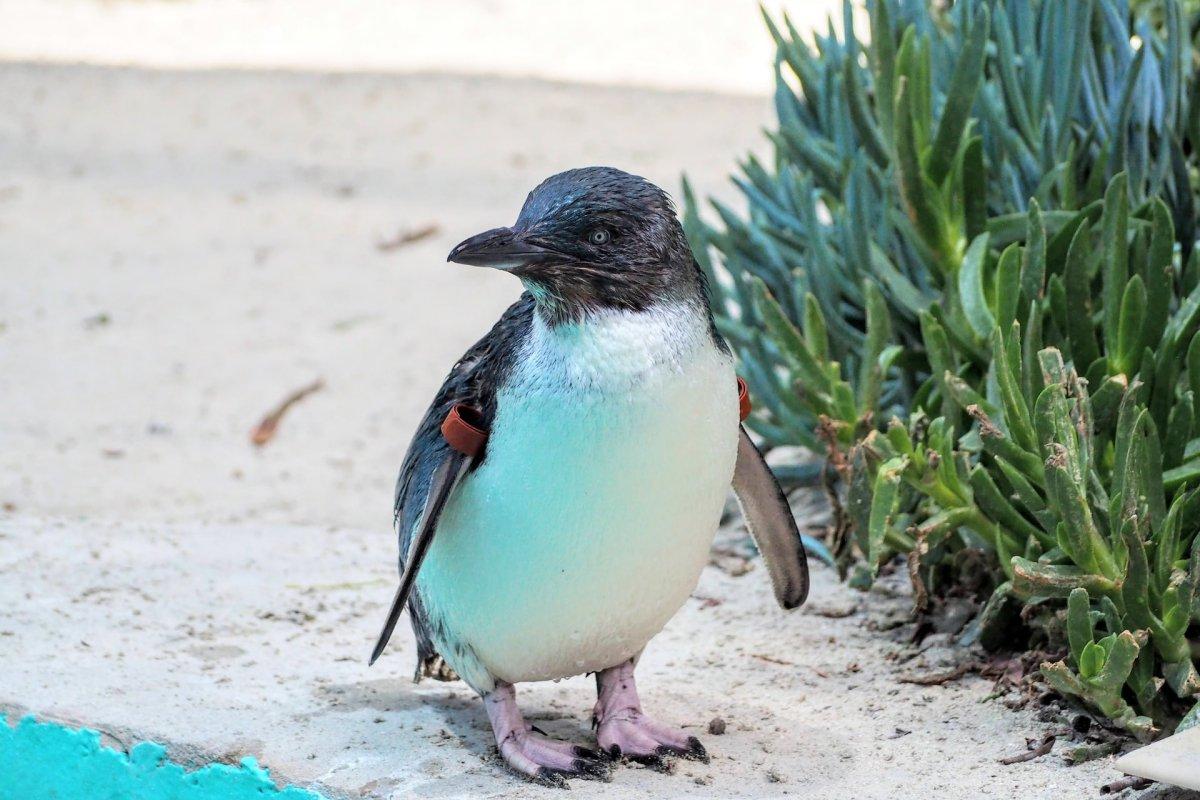
- Name: Australian little penguin
- Scientific name: Eudyptula novaehollandiae
- Conservation status:
The Australian little penguin, also known as the fairy penguin, is a small species of penguin found throughout much of southern Australia, as well as in southeastern New Zealand. It is closely related to the little penguin, with which it used to be considered conspecific.
Phillip Island is a major Victorian tourist destination for Australian little penguins. However, since the 1920s, it has become an increasingly important conservation concern, for all of the island’s 32,000 breeding adults.
Best spot to see this animal: Phillip Island
9. Australasian gannet
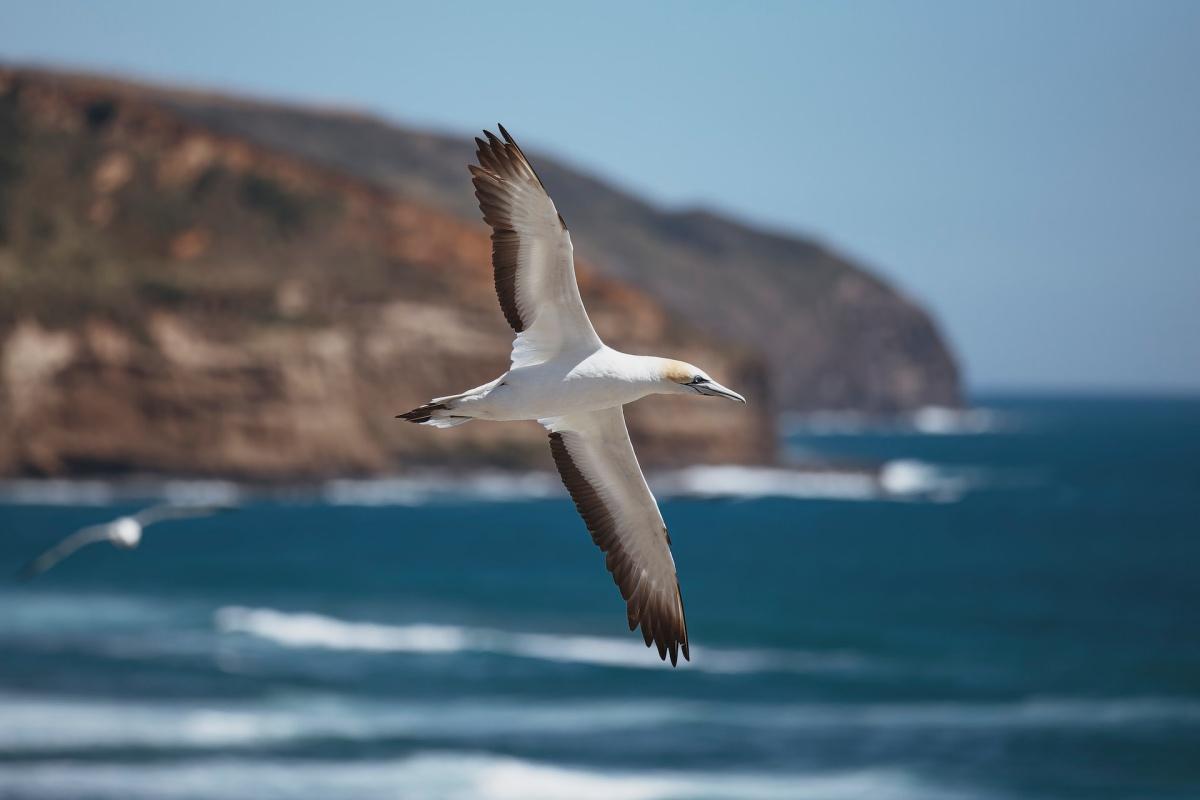
- Name: Australasian gannet
- Scientific name: Morus serrator
- Conservation status:
The Australasian gannet, also known as the Australian gannet or the tākapu, is a large species of seabird native to much of the southern half of Australia’s coastlines, as well as that of Tasmania and New Zealand. It is a spectacular plunge diver that breaches the water surface at high speed and feeds on fish and squid.
This bird mainly nests in Victoria, New Zealand, and Tasmania, mostly on offshore islands.
Best spot to see this animal: Lawrence Rocks
10. Black-faced cormorant
- Name: Black-faced cormorant
- Scientific name: Phalacrocorax fuscescens
- Conservation status:
The black-faced cormorant, also known as the black-faced shag, is a medium-sized species of cormorant found in much of Australia’s southeastern and southwestern coasts, as well as that of Tasmania. As its name suggests, its face and bill are black, as well as much of its upper parts and feet, while the rest of its body is white.
This cormorant is an aquatic bird with a long bill, and it can usually be found around rocky shores and offshore islands. Although considered of least concern globally, it is classified as vulnerable to extinction in Victoria.
Best spot to see this animal: Bass Strait
11. Brown fur seal
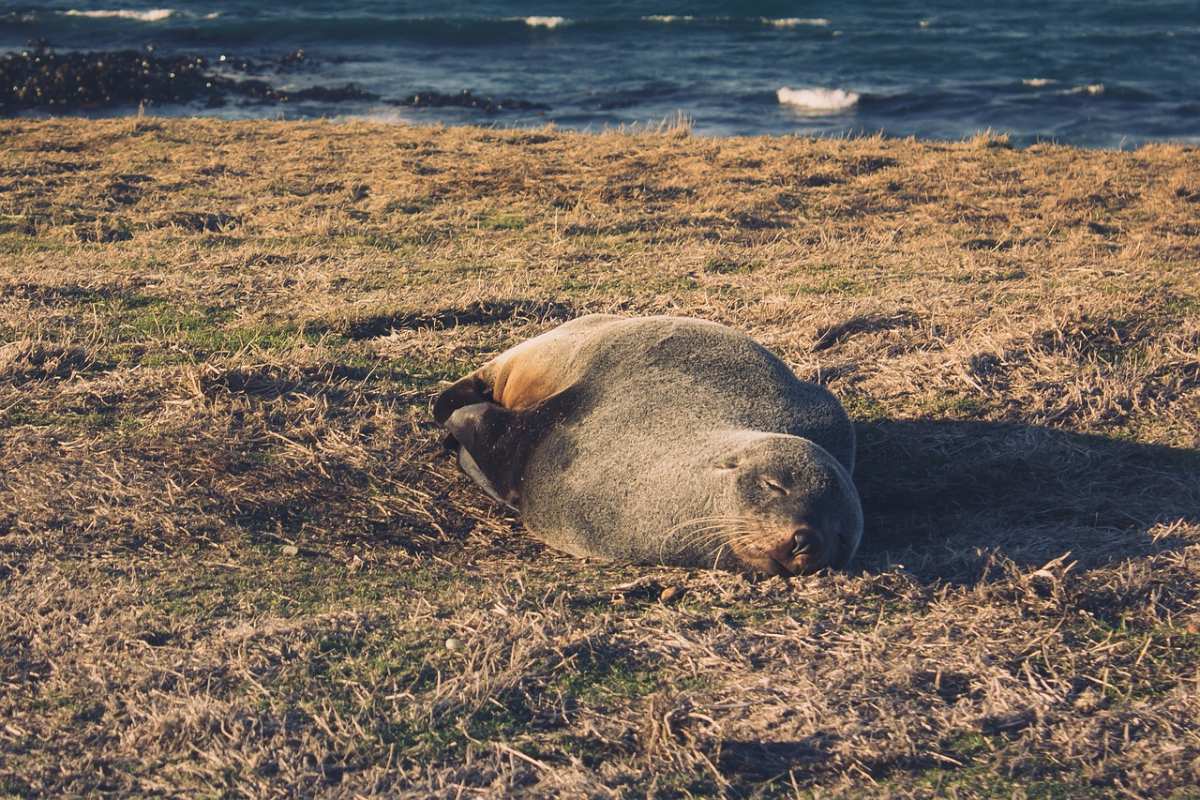
- Name: Brown fur seal
- Scientific name: Arctocephalus pusillus
- Conservation status:
The brown fur seal, also known as the Australian fur seal, the Cape fur seal, or the South African fur seal, is a species of fur seal found in southeastern Australia, but also in southernmost Africa, as its other names suggest.
It is the largest and strongest fur seal in the world, and it spends most of its time sunbathing on rocky islands, in very large colonies.
Best spot to see this animal: four islands off of Victoria’s southern coast (Bass Strait)
12. Australian white ibis
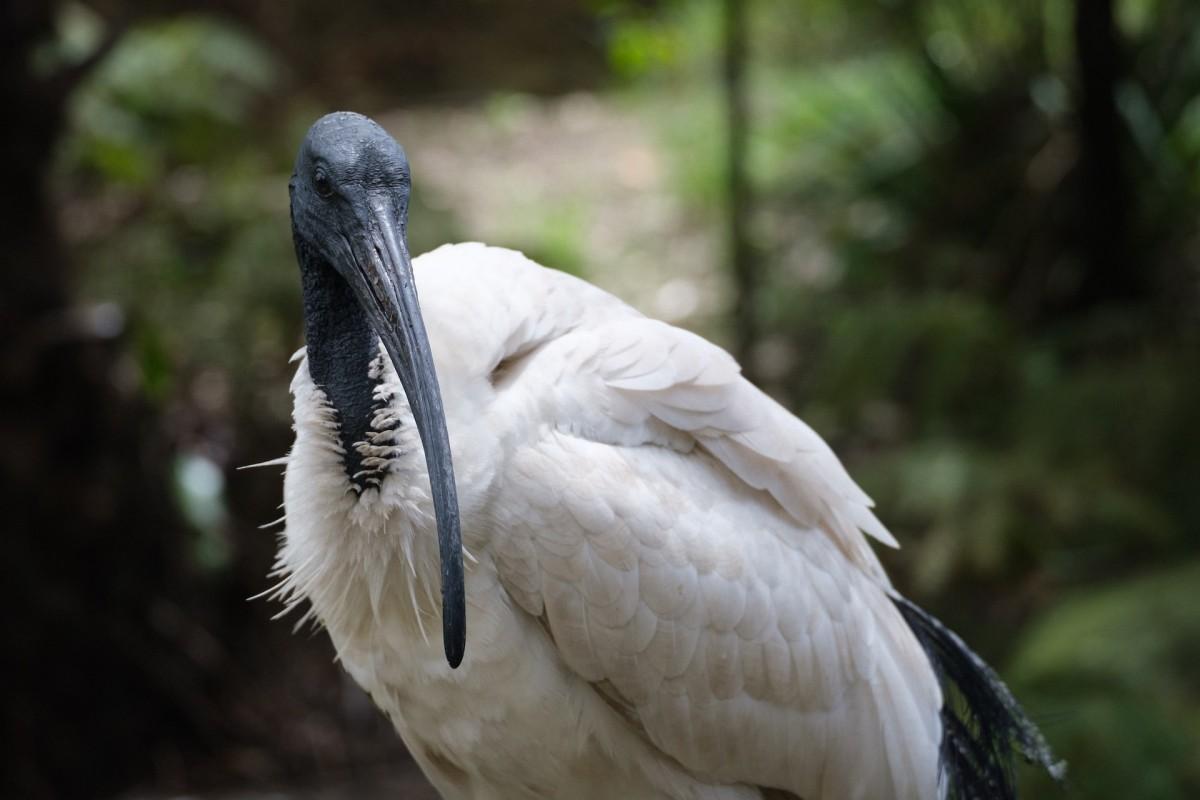
- Name: Australian white ibis
- Scientific name: Threskiornis molucca
- Conservation status:
The Australian white ibis is a species of wading bird native to much of Australia. Its plumage is mostly white, but it has a bare, black head as well as black legs and a long, curved black bill. Opposite to urban myth, this bird was not introduced from Egypt as a feral species.
This bird is listed as least concern, and has been increasing in several areas in recent years. It is familiarly known as the bin chicken or the tip turkey.
Best spot to see this animal: Healesville Sanctuary
13. Pygmy right whale
- Name: Pygmy right whale
- Scientific name: Caperea marginata
- Conservation status:
The pygmy right whale is a species of baleen whale found in temperate waters of the Southern Hemisphere. It feeds on euphausiids (small crustaceans such as krill) and copepods (small crustaceans as well, such as plankton).
This whale is one of the least studied cetaceans, and its total population is unknown. However, it has an unfavorable conservation status, despite being classified as least concern for now.
Best spot to see this animal: offshore waters, 40 km / 25 mi southwest of Portland
—
So there you have them, these were my 13 Victoria native animals. I hope you enjoyed this list and that you learned something new today.
In case you want to learn more about animals in the region, feel free to keep reading, as I still have some things to tell you about:
What is Victoria State Animal?
Victoria’s state animal is Leadbeater’s possum.
Leadbeater’s possum is a species of possum with a very long tail (about half its body). It does not have any gliding membrane but instead jumps from one tree branch to another.
When it comes to feeding, it eats insects living on the foliage and under the bark of eucalyptus, as well as gum and sap. It can only be found in the mountainous forests of the Victorian central highlands and is thus a local pride.
More About Animals in the World!
Loved these Victoria animal facts?
Find out all Australia’s most popular animals in this post 👉 Top 30 Wild Animals in Australia
Or go deeper into discovering Australian animals through these posts, by state:
- Wild Animals in Western Australia
- Wild Animals in South Australia
- Wild Animals in Queensland
- Wild Animals in New South Wales
- Wild Animals in Tasmania
Click here to see ALL the facts on the blog! Spoiler alert: there’s A LOT of them.
Share the knowledge! Click on the buttons below to share information about these famous animals in Victoria Australia with your friends, and help them learn more about the world 🙂
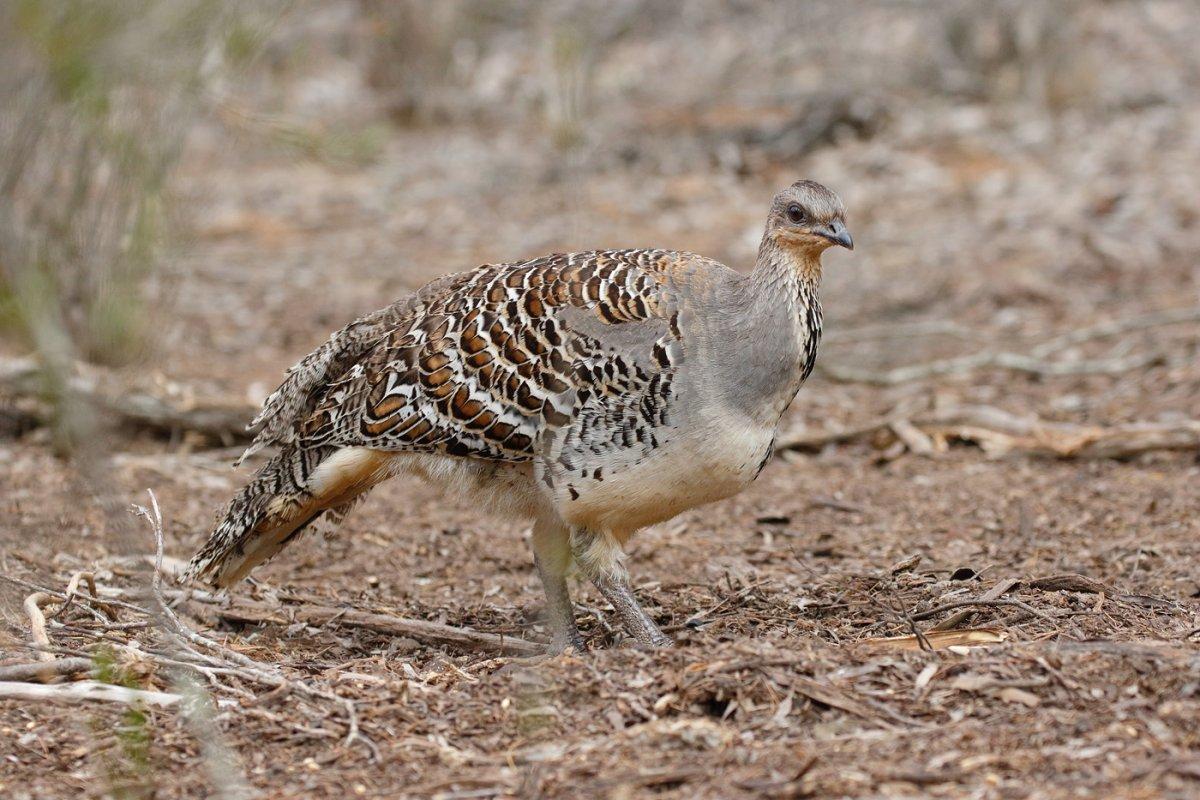
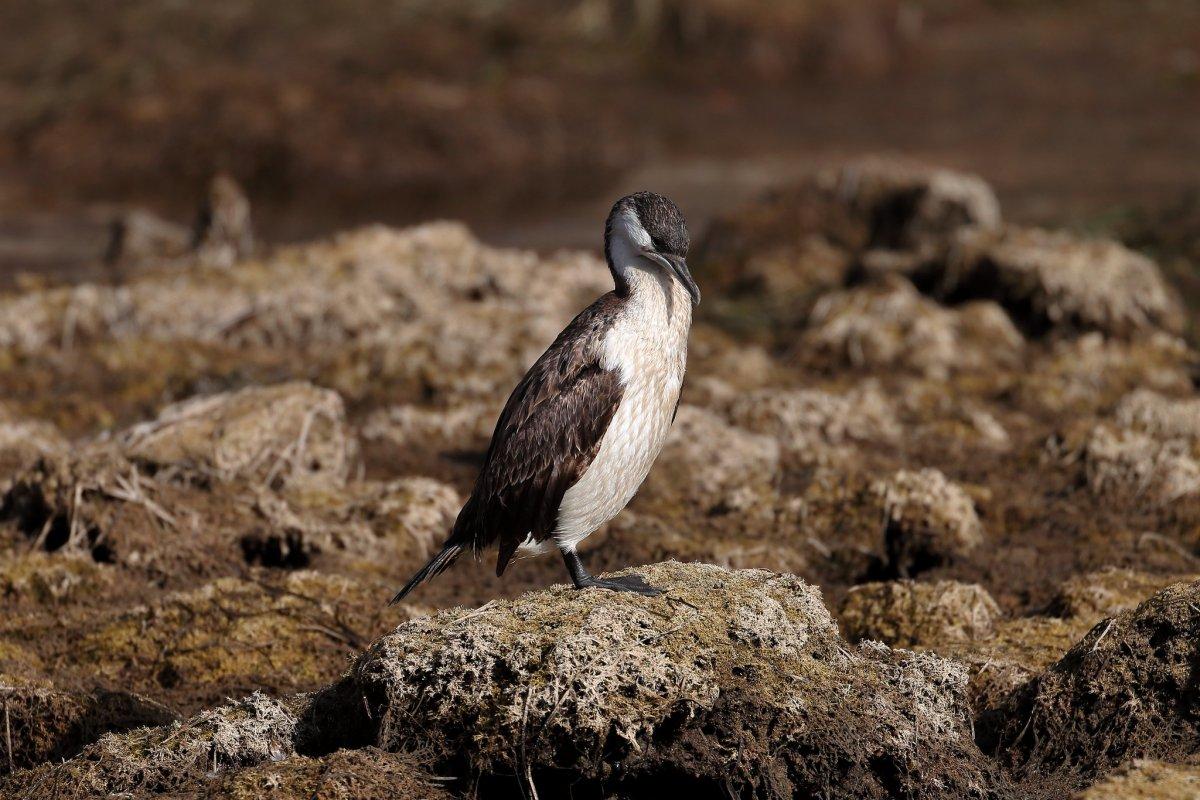
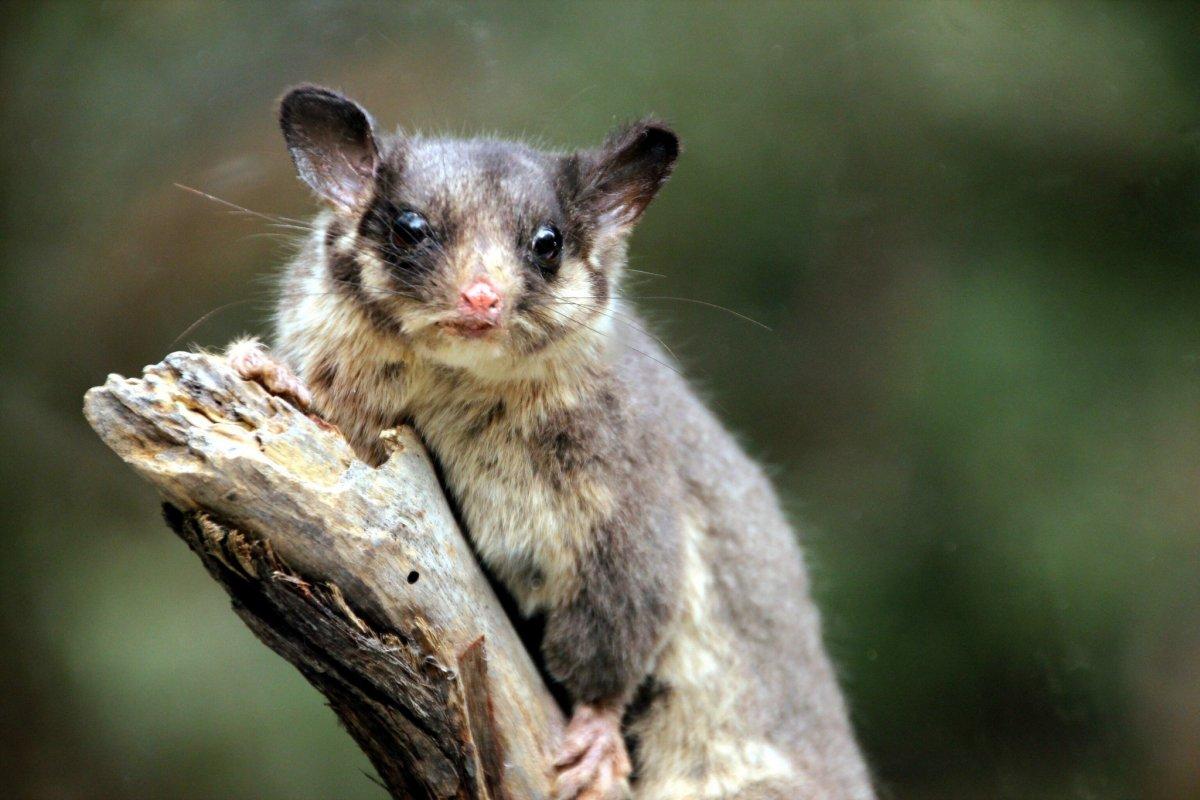

![42 Wild Animals in Italy [Wildlife in Italy]](https://www.kevmrc.com/wp-content/uploads/2022/06/42-wild-animals-in-italy.jpg)
![18 Wild Animals in Turkmenistan [Wildlife in Turkmenistan]](https://www.kevmrc.com/wp-content/uploads/2022/12/18-wild-animals-in-turkmenistan.jpg)
![13 Wild Animals in Tajikistan [Wildlife in Tajikistan]](https://www.kevmrc.com/wp-content/uploads/2022/12/13-wild-animals-in-tajikistan.jpg)